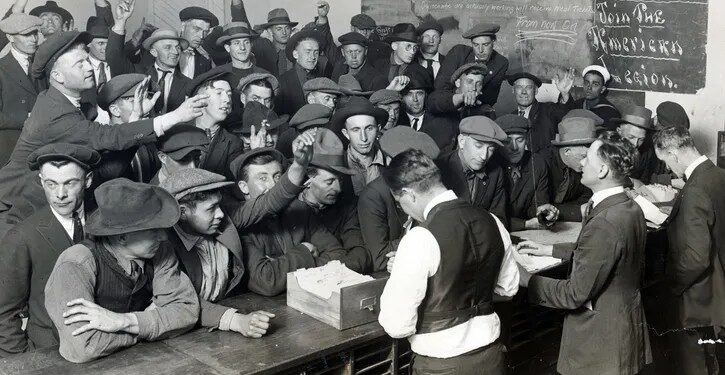Just five days after a record 13 million shares changed hands on Wall Street, panic gripped the trading floors once again. On 29 October 1929 — a date now seared into economic history as “Black Tuesday” — investors dumped a staggering 16 million shares in a single day, marking the most catastrophic collapse in U.S. stock market history.
The end of the Roaring Twenties
The decade leading up to the crash had been one of optimism, innovation and speculation. American industry was booming, household incomes were rising, and millions of first-time investors poured their savings into stocks. Leveraged buying — where investors purchased shares on credit — fuelled a bubble that seemed unstoppable. But by late October 1929, cracks began to appear. Prices fell sharply on 24 October, “Black Thursday,” and attempts by bankers to stabilise the market offered only brief respite.
The day panic took over
When trading opened on 29 October, the sell-off quickly spiralled out of control. Crowds gathered outside the New York Stock Exchange as prices plummeted and margin calls went unanswered. Brokers struggled to process sell orders fast enough, and some stocks lost their entire value within hours. Major companies, from General Electric to U.S. Steel, saw their valuations collapse, wiping out billions in paper wealth. The ticker tape ran hours behind, fuelling confusion and hysteria.
A financial system in free fall
In the days that followed, the panic spread beyond Wall Street. Banks that had invested heavily in equities suffered immense losses, leading to waves of closures. Millions of Americans saw their life savings vanish. Within months, industrial production began to contract, unemployment surged, and the stock market continued its downward spiral until mid-1932, by which time it had lost nearly 90 per cent of its peak value.
The long shadow of the Great Depression
Black Tuesday marked the symbolic beginning of the Great Depression — a decade of mass unemployment, deflation, and widespread poverty that reshaped not only the United States but the global economy. The crash also led to sweeping financial reforms, including the creation of the Securities and Exchange Commission (SEC) and stricter regulation of banks and brokerage practices.
A cautionary tale for generations
Nearly a century later, the events of October 1929 remain a stark reminder of the dangers of unchecked speculation and excessive leverage. While markets have evolved and safeguards have been strengthened, the psychology of greed and fear that fuelled Black Tuesday continues to echo through every modern financial crisis.
Newshub Editorial in North America – 29 October 2025



Recent Comments